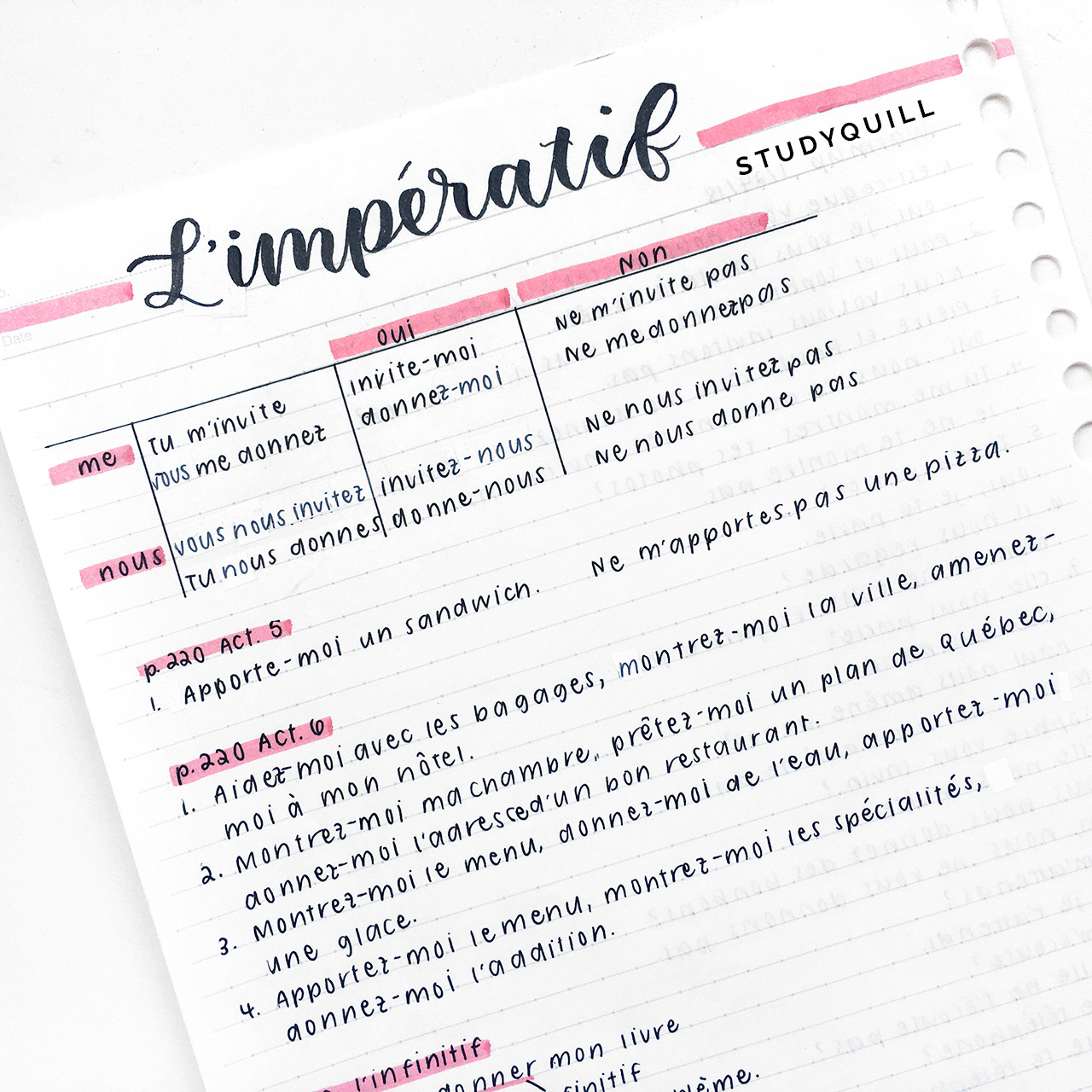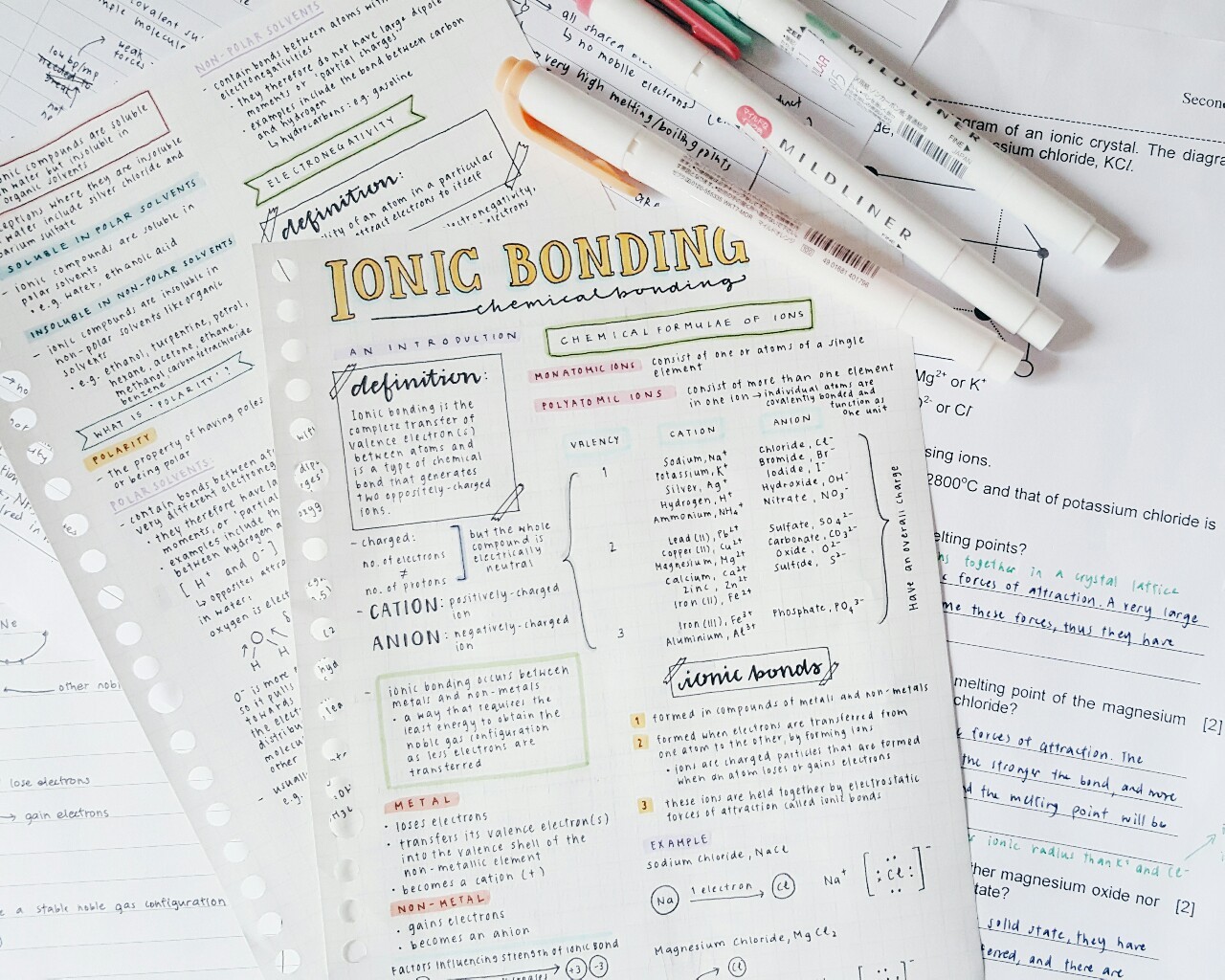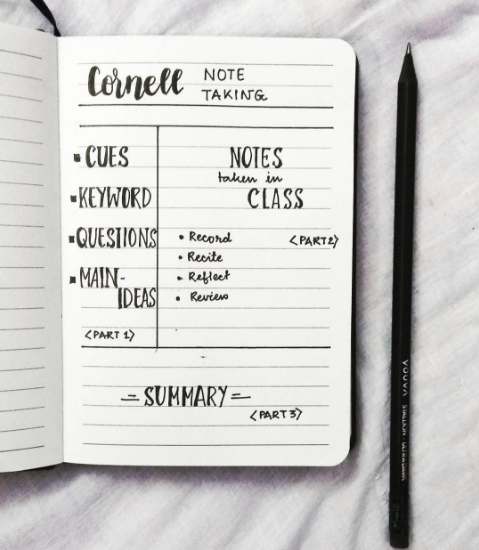
The Ultimate Guide To Taking & Studying Cornell Notes
To take Cornell notes you need to divide your page into 3 sections – a question/cue column, a note taking box and a summary box. Alternatively you can get a printable template or use a digital template like the one found in my digital student iPad planner. You then write your notes in the notes section and write questions that relate to the content in the cue column as you go. After making your notes you write a summary in your own words in a few sentences in the box at the bottom. Once you have taken your notes you can start studying them. Simply do this by asking yourself the questions you wrote in the cue column and answering them without looking at your notes. Go back and re-read your notes to make sure you are getting the answers correct!
A Quick History Of The Cornell Note Taking System
The Cornell note taking system is a note taking method which encourages active recall. It was created by a professor called Walter Pauk in the 1940s who taught at Cornell university in America. That’s why it’s called the Cornell note taking system.
Cornell note’s success is due to its original format that seamlessly combines note taking and revision. It’s loved by so many students as after taking notes you do not need to make separate revision materials such as flashcards.
How To Prepare To Take Cornell Notes
The traditional way to take Cornell notes is to take a piece of A4 paper and draw up the cornell template. However with the rise of digital note taking, you can skip this step totally by using a digital cornell note taking template like the one seen in my digital student planner or use a printable cornell note taking template like my vertical orientation cornell note printable template or my landscape cornell notes printable template. As these printable templates are PDFs you can also use them digitally in a PDF reading and editing app such as GoodNotes or Notability.
To prepare yourself for taking Cornell notes you need to split your page into 2 columns. The one on the left is much smaller than the one on the right. The left column is called the cue column which takes up about 25% of the page. The right column is called the note taking area and is about 75% of the page. This vertical line which makes the two columns does not go all the way down the page as it stops where the summary section starts. To make this all you need to do is draw a horizontal line to create a row which is about as thick as the cue column is wide.
Here is a diagram which visually explains that:
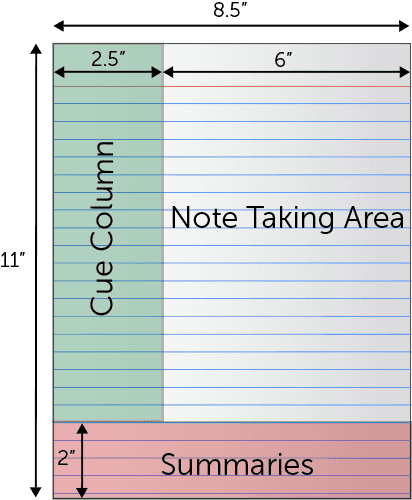
It can take quite a bit of time to draw up the Cornell note layout each time you need to take notes for class. That is why I have created my Cornell note taking templates to reduce the amount of time you have to spend formatting your notes so you can focus on the important information you are learning in class! You can find my Cornell note taking templates at my Etsy shop here!
How To Take Great Cornell Notes

There are three main steps to taking Cornell notes:
- Write your notes during class in the notes section. Also write your revision questions in the cue column as you go.
- Write a summary of the key ideas as soon as possible after class.
- Revise your notes using the cue column and active recall methods
The Note Taking Section
When:
During class time
What to include:
- Your notes should consist of the main ideas that are paraphrased.
- It is important to avoid long sentences here
- Dot points are a quick way to take notes
- Try to use symbols and abbreviations where possible
- Use a colour coded highlighting or underlining system if applicable
The Cue/Recall Column
When:
As you write your notes, write down questions that are related to the notes you are writing
What to include in the cue column:
- Relevant questions to prompt you to recall the information.
- Keywords to prompt you to recall the information
The Summary Box
When:
After class. Around 15 minutes after class/as soon as possible
What to include in the summary box:
- A succinct summary of what you have learned
- Only the most important information, more detail is in your notes box
- Full sentences, around 3 to 5
- In your own words
The best way to write your summary:
I suggest covering up the note taking box with a piece of paper and writing a summary in pencil to test yourself on what you have just learned when it is fresh in your mind.
After writing a few sentences here, read what you have written in the notes box. See what information you have missed and what you might’ve gotten wrong.
Correct your work/add more detail and then write the summary in pen.
The summary box is one feature that makes Cornell notes so effective because it encourages you to reflect on your notes by summarising in your own words.
How to Study Cornell Notes
It is really simple to review Cornell notes. All you need to do is cover up the notes column with a piece of paper or equivalent and ask yourself the questions you have written in the cue column.
If you have a printable Cornell note template you can print off a second piece of paper, cut around the notes and summary box and use it to cover your notes and summary. This way there is definitely no way of cheating by peaking and thus there is no chance of developing a false sense that you know everything.
This study method of covering information, encourages active recall and makes sure you actually know your stuff.
It is also important to revise your notes regularly for it to be effective. A feature I added to my vertical printable Cornell notes template is a revision tracker which is really helpful because it encourages you to revise. The revision tracker is just a line of 5 small dots in the top right hand corner of the summary box that can be coloured in to keep track of each time you study your notes.
Before You Go!
Don’t Forget To Check Out The Cornell Note Taking Products I Mentioned In This Article!
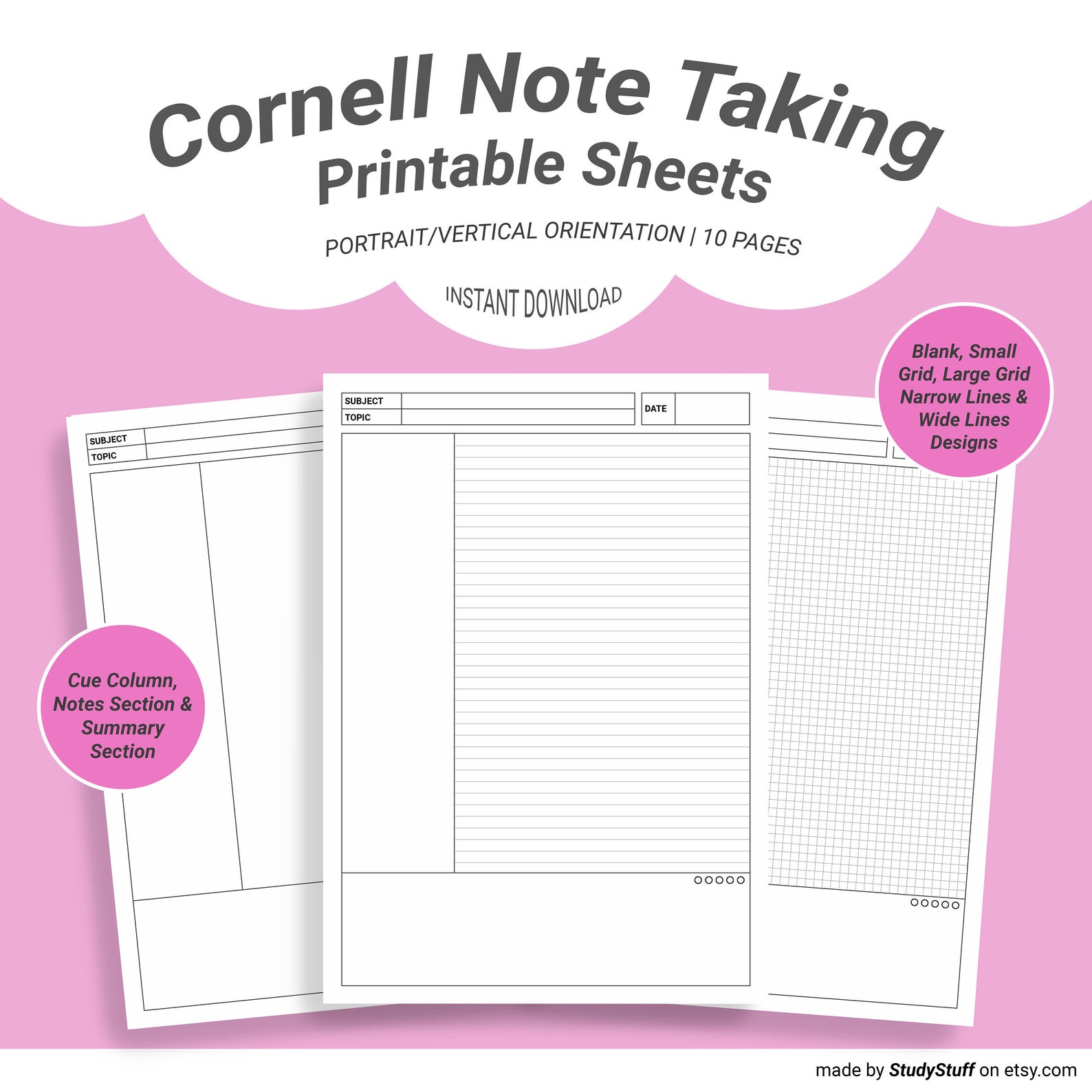
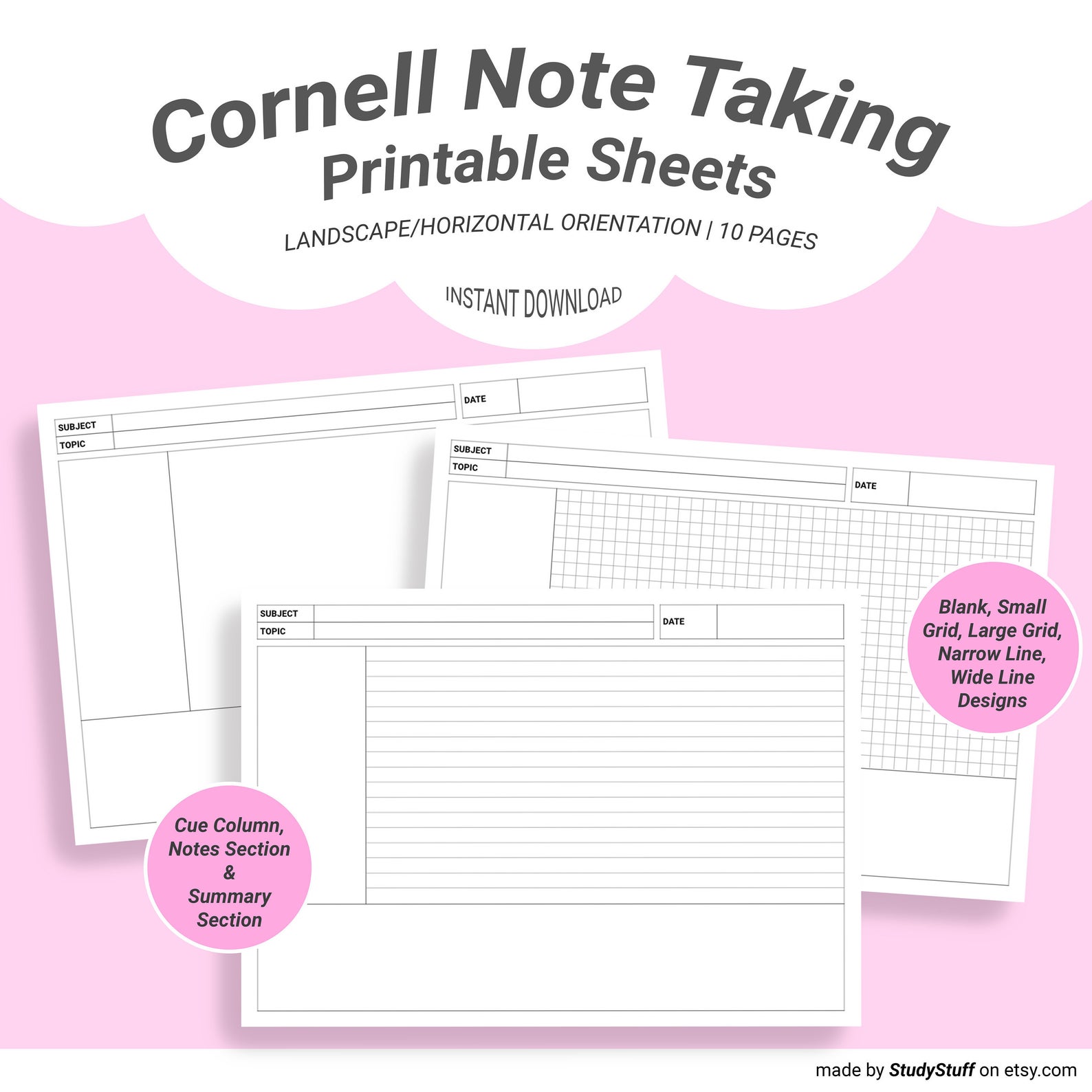
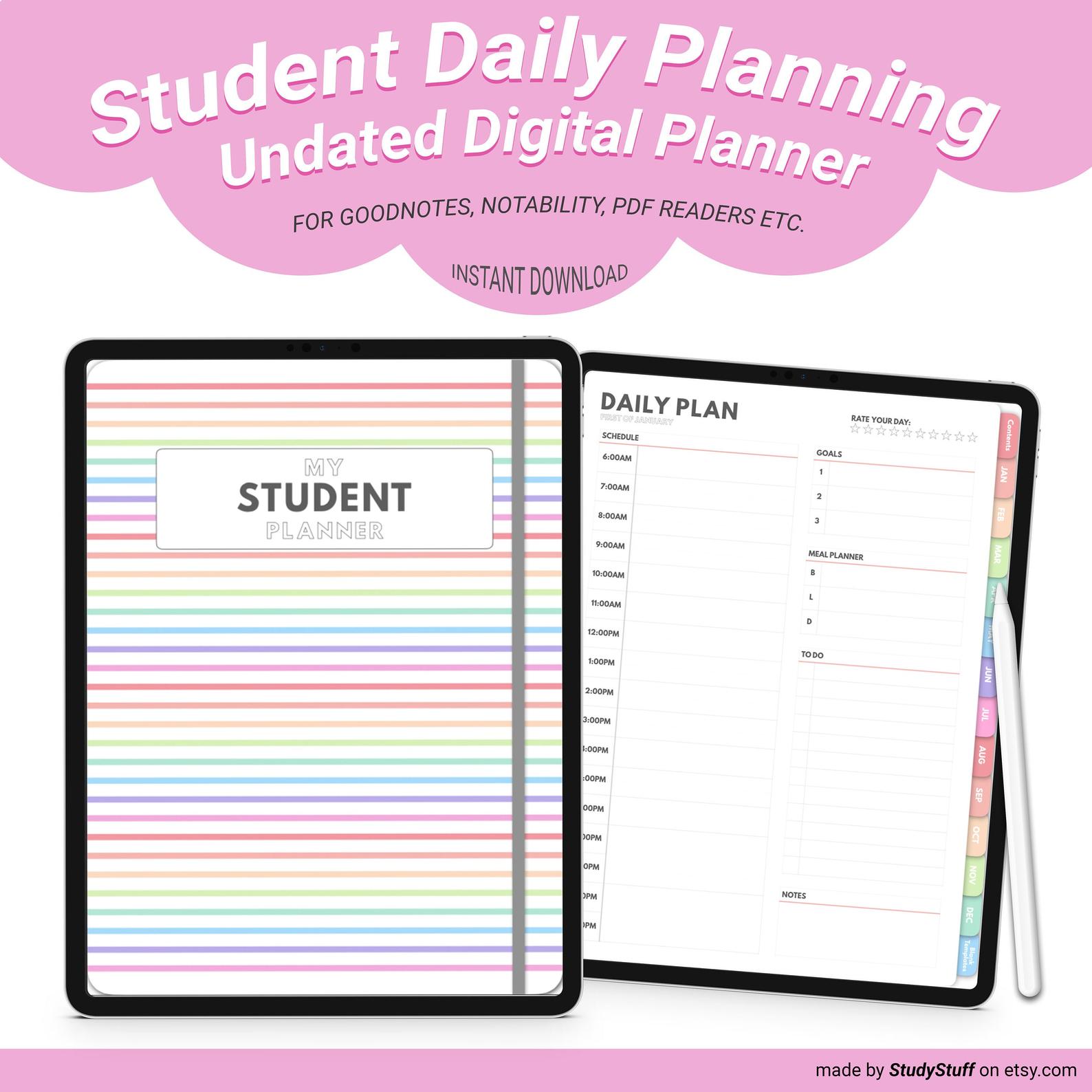
If you take notes using your iPad, you need to know these 12 iPad note taking tips! They will make …
There are many different note taking methods that can work well for language learning. To take effective notes for language …
To take pretty notes you need to firstly choose a consistent colour scheme. Next you should draw an eye catching …
To take notes on a PDF on an iPad you need to use a note taking or PDF reading app …
To get motivated to do school work one should set SMART goals, work in a motivating environment, break large projects …
To take aesthetic notes one needs to choose a consistent colour scheme, use eye catching titles and headers, invest in …


